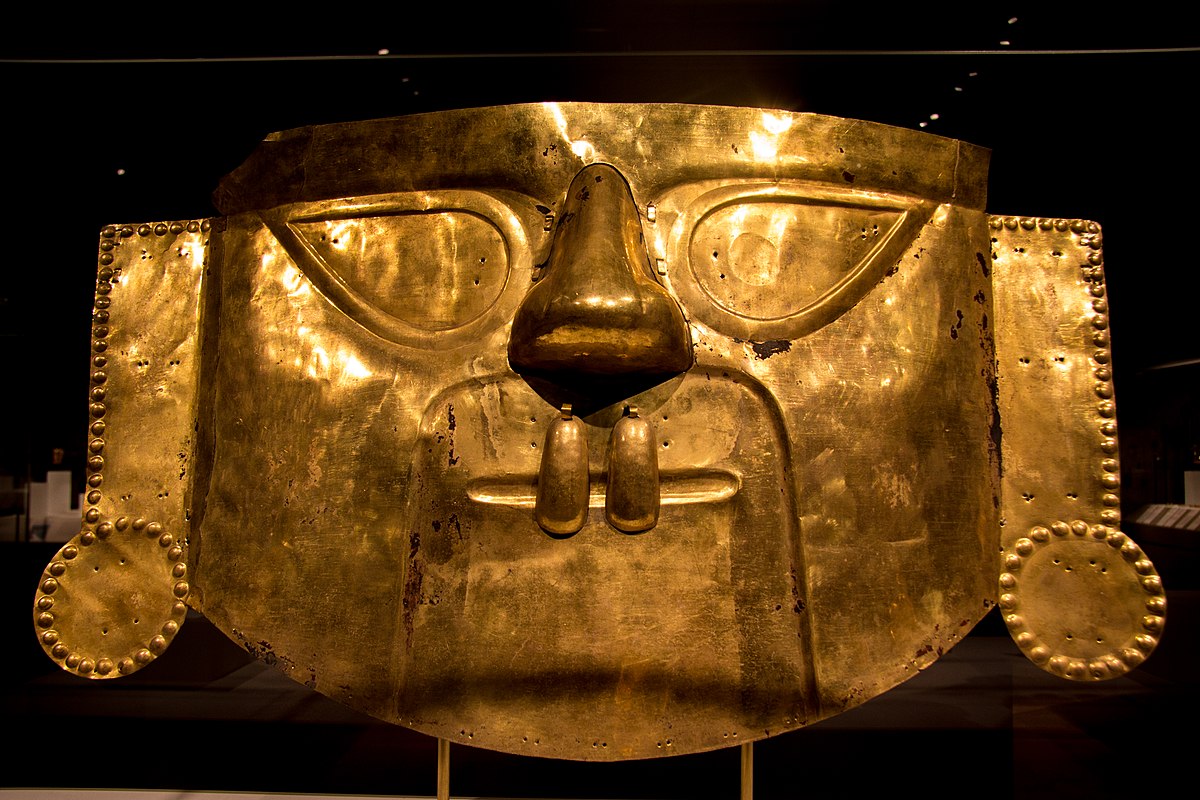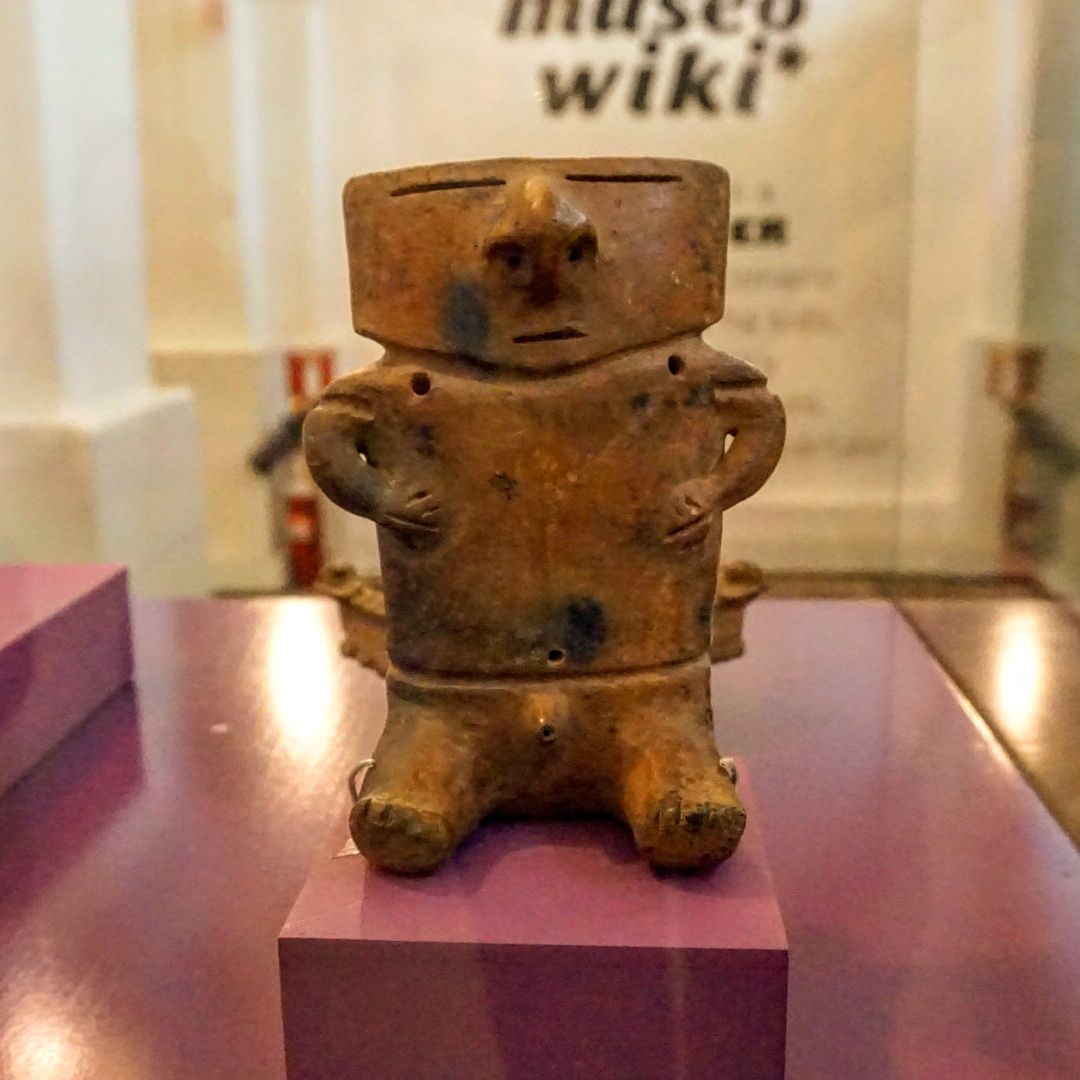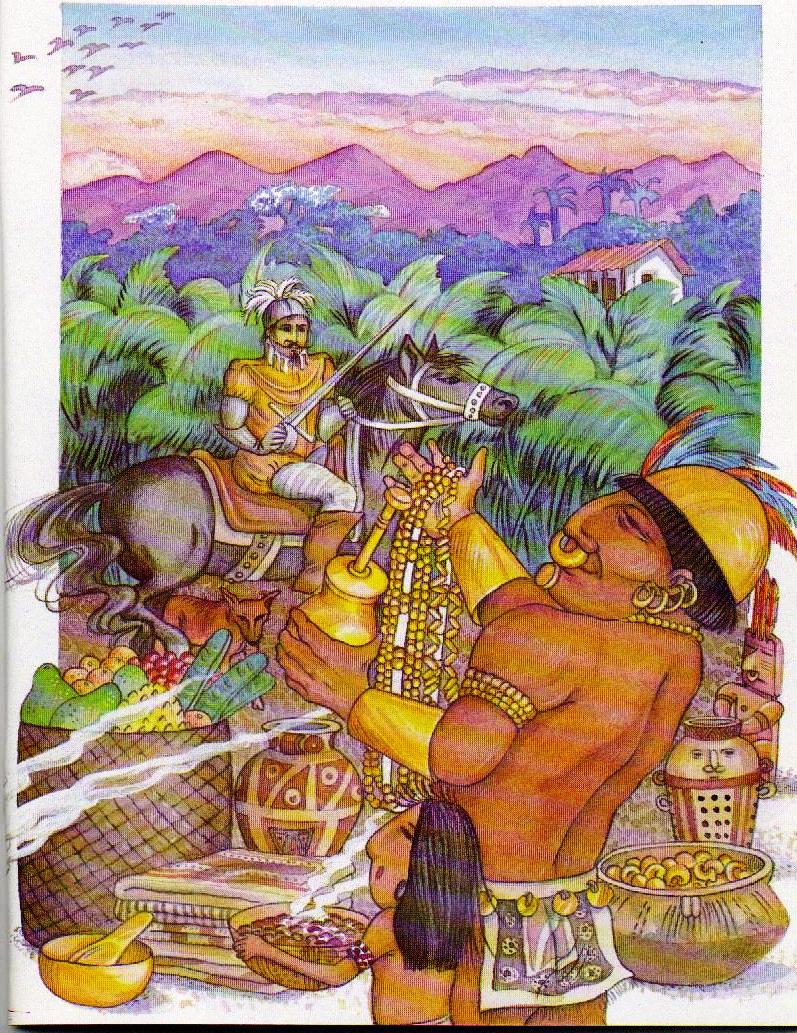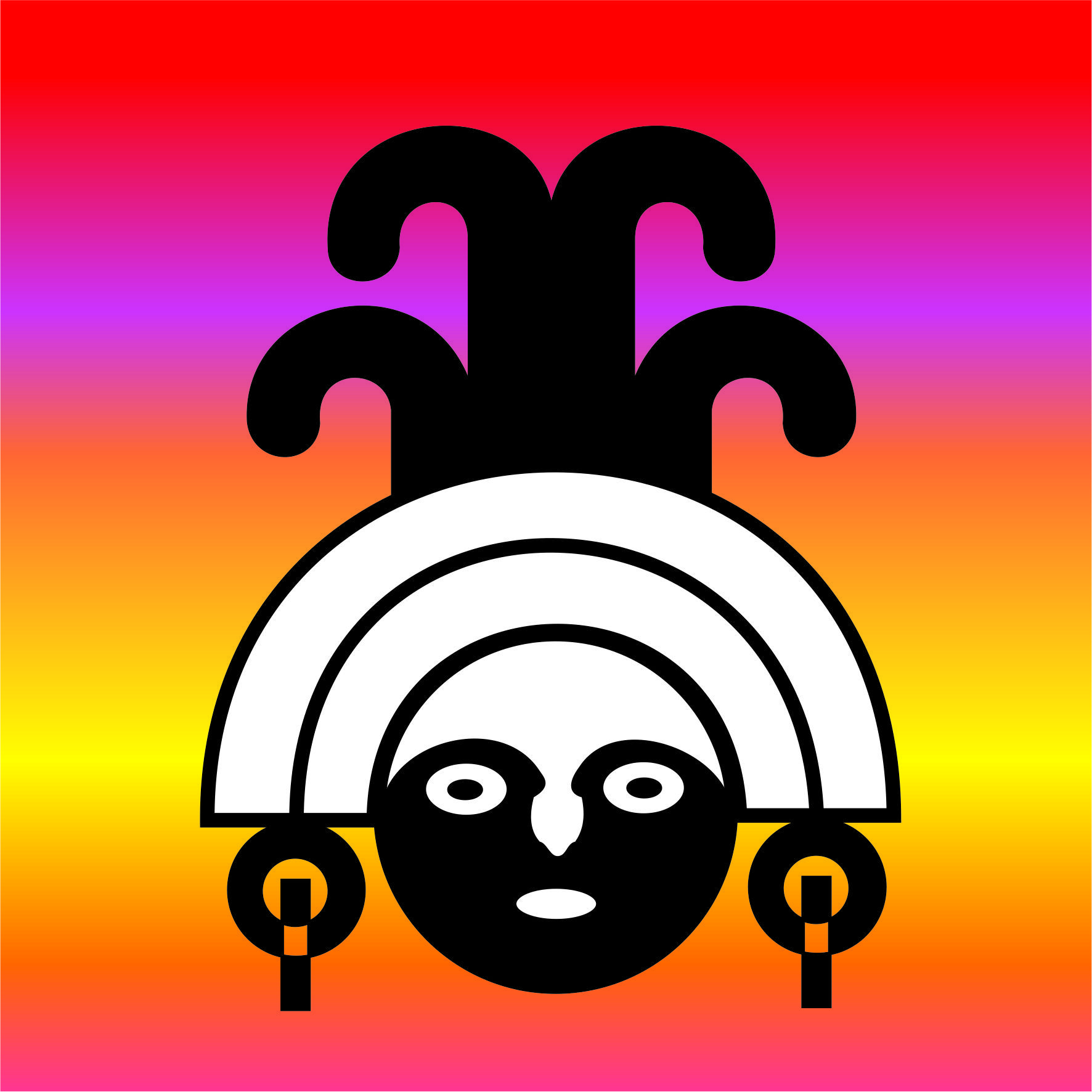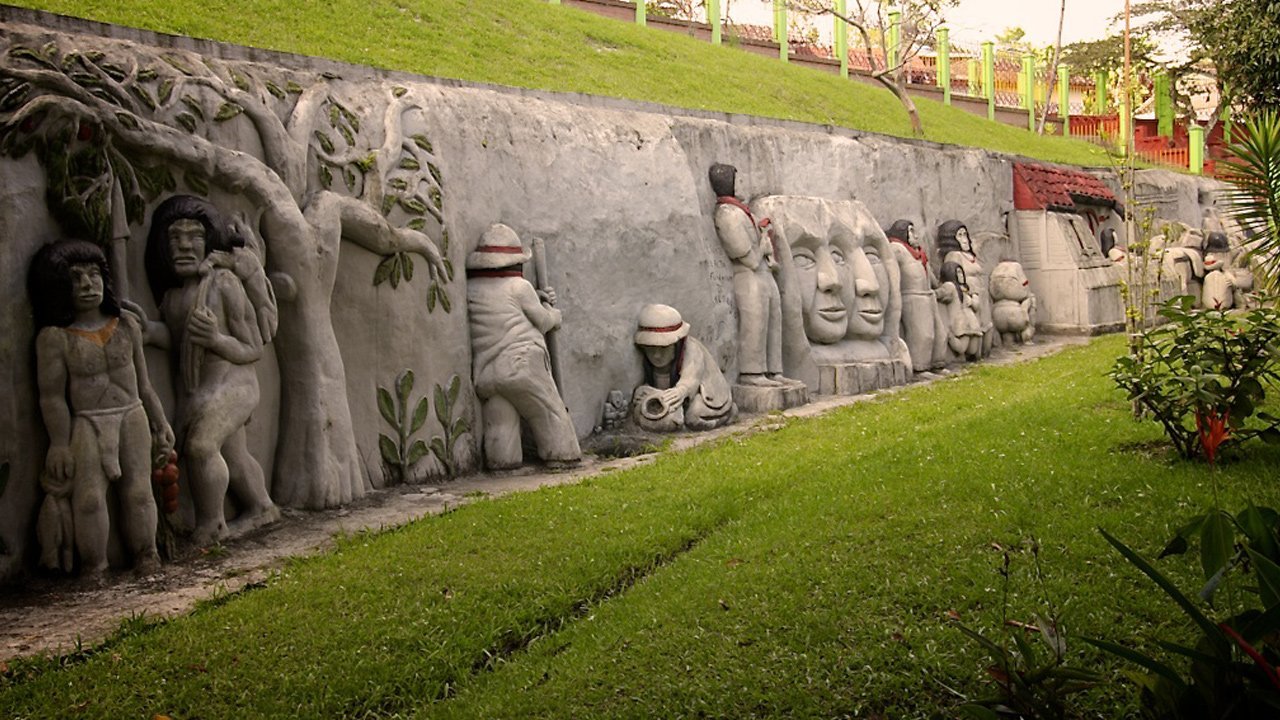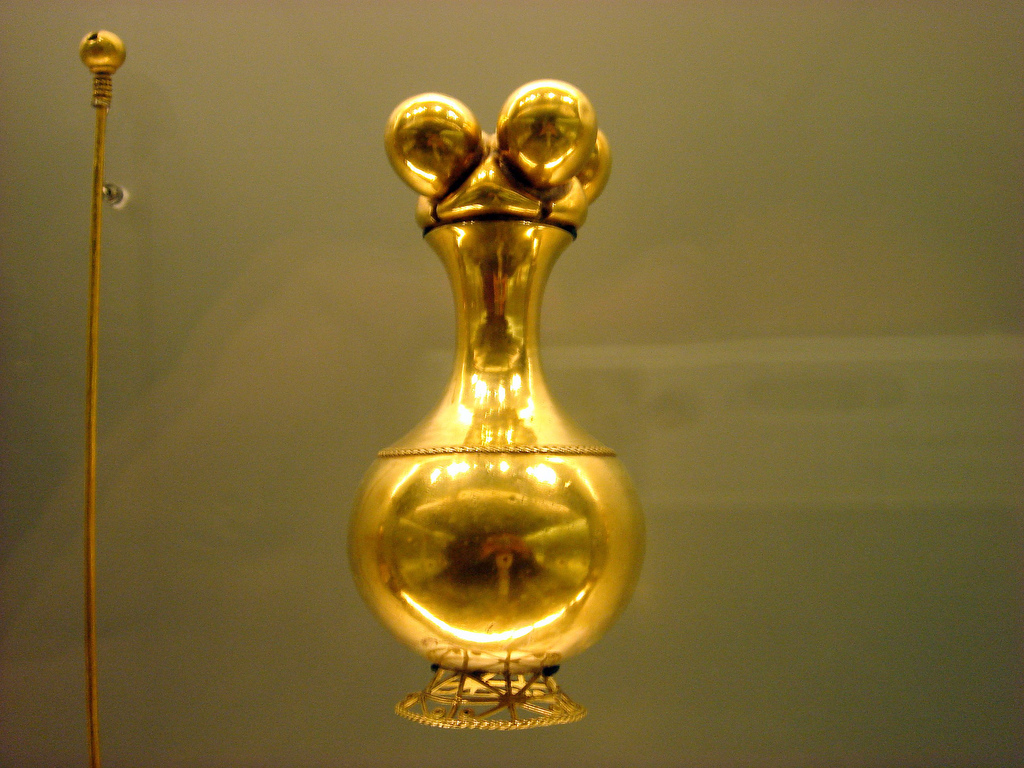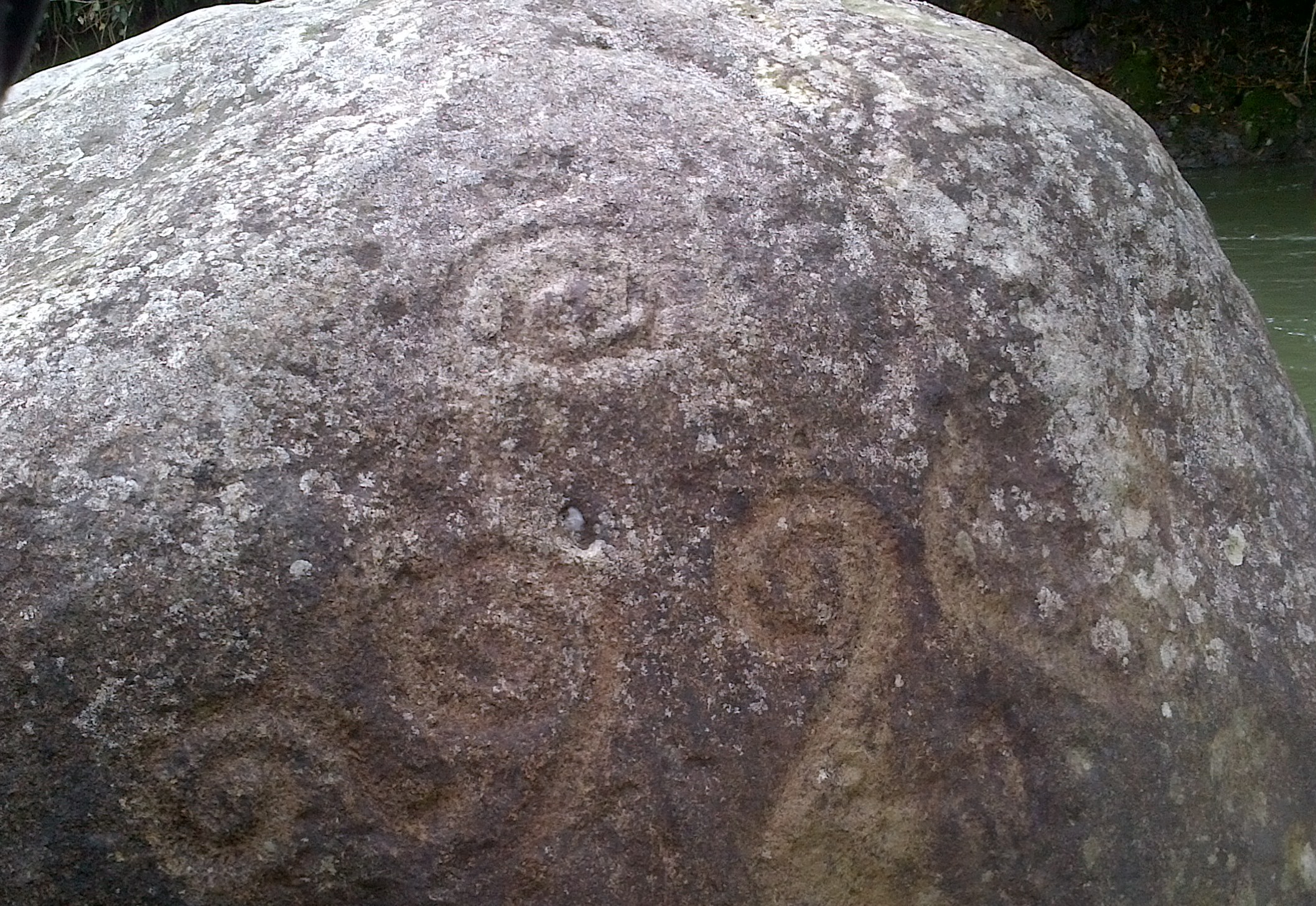Settled in the middle course of the Cauca River, in Colombia, the Quimbaya Culture made life in a jungle landscape, high mountains and narrow valleys and still amaze the world with their goldsmith pieces Meet the ancient gold wizards!
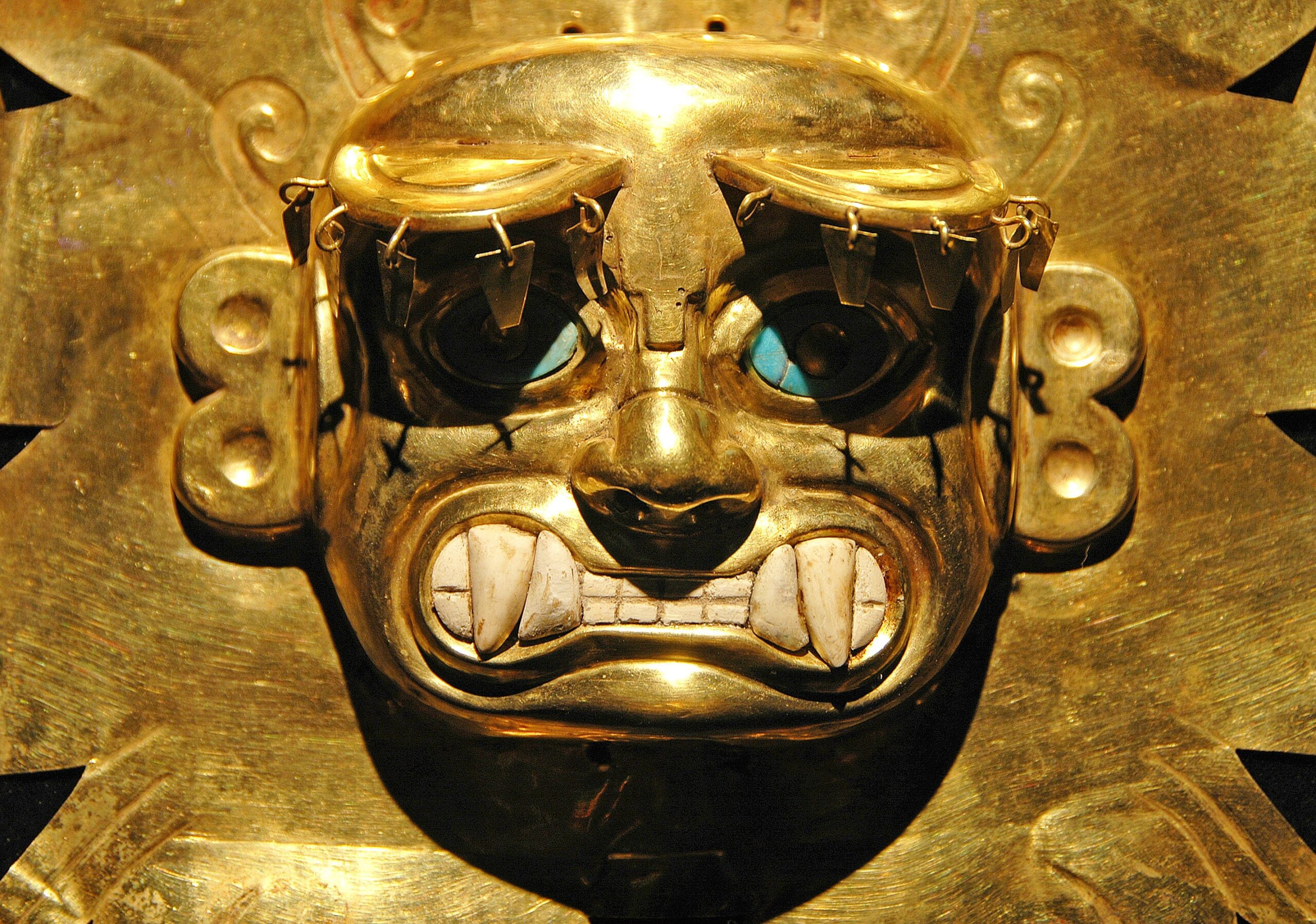
Quimbaya Culture
The Quimbaya civilization or kɪmbaɪa, was an ancient South American native culture, whose talent in the use of gold is recognized and appreciated to this day.
Known for working in gold with great technical precision and detailed designs, the pieces are made from a tumbaga alloy, with thirty percent copper, providing very significant shades of color to each of the pieces.
Name Quimbaya, is currently a general term that refers to the elements and works produced in the geographical area where this culture lived, even when they do not necessarily come from the same ethnic group or from the same time.
Location
Among the pre-Columbian cultures of southwestern Colombia, we find the Quimbaya culture that inhabited the areas that today correspond to the modern departments of Quindío, Caldas and Risaralda in Colombia, in the surroundings of the Cauca River valley.
No data is recorded on when they initially settled in that area, however, it is estimated that it was around the XNUMXst century BC.
History
The cultural development of this nation is separated into two periods called Early or Classic and Late. The Quimbaya people reached their zenith during the period known as the Classic, being the most emblematic piece of their culture produced during this stage. It is known as Poporo Quimbaya, on display at the Bogotá Gold Museum.
Classical period
Also known as Early, it developed between 500 BC and 600 AD. One of the main characteristics of the classical period is the choice of a mainly agricultural lifestyle, this being the basis of its economy and way of subsistence.
In addition, the exploration and development of certain manual trades begins, showing interest and skill in the elaboration of ceramic pieces and the manipulation and casting of metals.
In this period the Quimbaya goldsmith work reaches its maximum development, the elaboration of pieces reaches a great variety, from human figures attached to reality or stylized, to animals and insects that were associated with the life cycles of nature such as butterflies.
It is affirmed that, at some point in the Classic, possibly in the XNUMXth century, the Quimbayas made a pause in their artistic work, however, there are later artistic pieces that indicate that this culture takes up crafts and goldsmithing.
After the pause in the artistic activities, the samples of goldsmithing and other artisanal objects, lean towards geometric shapes and schematic decorations. which are very basic and simple representations of the figures. During this stage, cotton spinning flourishes, innovating and implementing various techniques, in addition, different styles can be seen in ceramic pieces throughout the Cauca region.
Late Period
This stage covers from 800 to about 1600 after Christ. In this period of the Quimbaya culture, manual trades continued to be common and goldsmith designs more frequent.
Many of the pieces of art are anthropomorphic, depicting seated men and women with their eyes closed, generally with placid expressions, as well as fruits and shapes of poporos, the well-known containers where the aborigines kept lime.
Many studies of the archaeological elements indicate that their cultural development was advanced, organizing themselves by separate communities under the mandate of a cacique.
Ceramics, commerce, gold work and war were maintained as main activities, without neglecting religious life, which had special importance in their daily lives.
During the late period, the Spanish conquest of the territory occupied by the Quimbaya began, this around the year 1539, who managed to subject these aboriginal peoples to slavery, under the yoke of the encomenderos, who organized them as forced labor. .
Around 1542, the first aboriginal rebellion occurred in these areas and approximately fifteen years later, the second occurred, which was the most relevant of both.
However, both revolts were defeated, which generated an unstoppable decrease in this ethnic group, so that by the year 1559, more than fifty percent of the chiefdoms had disappeared. The remaining populations subjected to forced labor and harassed by malnutrition and the different diseases brought by the Europeans were rapidly declining.
Later the war of the Pinaos and conquerors, ended up almost completely decimating the Quimbaya population.
Around 1628, the records of the last census of this population indicate that, of some twenty thousand existing tributaries in 1539, only a little more than sixty remained. In other words, by the XNUMXth century this culture had almost completely disappeared.
Most of the articles recovered from this culture are part of funerary offerings, which are found inside hollow sarcophagi, built with trunks, something very frequent since gold was a sacred metal that served as a passport to the afterlife.
Social organization
The chronicles written during the time of the conquest and colonization indicate that by the year 1540 the indigenous population exceeded fifty thousand individuals. Organized in the so-called cacicazgo as a form of government, the central figure was the cacique who led groups of about two hundred natives.
Each cacicazgo had autonomy in the way of directing, making decisions and administering, as well as, as expected, they enjoyed quite attractive benefits and privileges, such as the possession and use of products and exchanged elements, servitude, etc.
In this culture, unlike the majority on the continent, women had importance and participation in politics. In many cases, when the Cacique dies, his main wife will inherit the position of community leader, possibilities that the first-born son also had and as a last option a nephew.
In different samples and pieces of art, the image of women is represented, sitting at the same level as men, including the Cacique.
The members of the community were in charge of activities for the common benefit, such as the cultivation of the land, metallurgy and goldsmithing, construction, etc. On the other hand, women were in charge of housework, child rearing, ceramics and in some cases they worked in the collection and processing of salt.
Polygyny was frequent and common, a custom in this culture, where the man could marry more than one woman simultaneously, generally selected among his relatives.
In the case of the Quimbayas, in this type of marriage one of the women had a higher status and held the command, in addition, only one of her sons was the heir. The houses of the Quimbayas were not very spacious, made with mud and cane leaves.
Religion
The life of the communities in all aspects maintained a close relationship with their spirituality. They had several tutelary divinities, practicing sacrifices and other rituals to avoid tragedies and calamities.
This culture had the belief of the existence of another life better than this, after death, they were also convinced that to reach it they had to have some resources that would be placed in their grave during their funeral. We can deduce then that the spiritual and religious aspect for them were essential.
For these indigenous people, water was an element with many special powers, especially to cure conditions and illnesses, so it was a custom to repeatedly take baths when they had an ailment.
Economy
Settled in areas with a temperate tropical climate, the Quimbayas had the opportunity to plant and harvest a wide variety of products, such as: corn, yucca, avocados, guava, pejibaye, plum, etc.
Cassava and corn were the basis of their diet like many other aboriginal cultures, however, they were also hunters and fishermen, in addition to collecting everything that nature gave them and could take advantage of.
They considered themselves good hunters, so they fed on rabbits, deer, opossums, tapirs, armadillos, foxes, and peccaries, among other animals. Due to the large number of rivers in their territory, they built canoes and paddles to travel through its waters, so they were also very good fishermen, taking advantage of the amount of fish available to them.
Regarding the mining activity, the main material for them was gold, developing quite advanced and effective metallurgy techniques to process it, what is noticeable is the elaborate pieces, very aesthetic and with fine finishes.
But the lands where the Quimbayas settled did not have many mines suitable for being explored and exploited in a constant and intensive manner, so the alluvial gold brought in by the river currents was used.
Even when it is presumed that the quality of the gold was excellent, since in many cases it functioned as a precious metal of law. in business negotiations.
However, not only their technical ability for goldsmith work stands out, since they also dedicated themselves to the production of oil for lighting, the extraction of salt from the rivers and the manufacture of textiles, cotton blankets being one of their main products.
They dedicated themselves to trade, taking advantage of the quality of their pieces of cotton, ceramics, gold and other metals to exchange with different cities and regions.
Culture, traditions and customs
The Quimbaya material culture was very varied, even though their goldsmith pieces are the reason why many know them, they had many other skills and riches that make them a definitely interesting culture:
graves and funerals
The Quimbayas paid a lot of attention to funerary practices and the elaboration of the tombs, of which there is a great variety, very different from each other, depending on what is specified for the ceremony of the deceased.
Placing the different offerings that would accompany the deceased was a custom that did not change, because according to their oldest beliefs, the deceased should carry them on their way to the next life. These presents included gold objects, some personal possessions of the deceased, food, weapons, and some items sacred to that culture.
goldsmith
Many activities were developed in these communities in an innovative and efficient way, but perhaps the most famous that the Quimbayas carried out is the striking and luxurious goldsmithing. Each piece is unique, beautiful and shows impeccable technique.
The metallurgy system they developed to combine gold with copper was very advanced, allowing them to take advantage of the scarce amount of gold in their region.
The melting techniques used still represent a mystery since the way to melt and mix maintaining the exact degree of both materials without harming the purity requires temperatures of about a thousand degrees.
The mixture of these two metals is known as tumbaga, resulting in very bright, highly durable and very attractive pieces. They are considered among the most important samples of goldsmithing on the American continent for a reason. The quimbayas worked metals in the classical stage using two main techniques:
- Hammering: consists of hitting metal pieces with hammers that are previously heated to red hot and then cooled in water. Repeating the process until the desired thickness and shape is achieved.
- Lost-wax casting: consists of making molds of clay, coal and wax, where the molten metal is emptied and takes the shape of the mold.
Among the most famous and popular pieces are the poporos. This pre-Columbian artistic piece from the quimbayas was a kind of jar used in some religious rituals and ceremonies to preserve lime, which was used in the processing of coca leaves, known as mambeo.
One of the most curious objects that represent a mystery of the Quimbaya culture are the well-known artifacts called Otún Birds.
Its name is due to the fact that the first piece was found on land near the banks of the Otún River, province of Risaralda, Colombia. Other pieces like this have been found on the banks of the Cauca and the Grande de la Magdalena.
Also known as pre-Columbian planes, these artifacts are made of gold or bronze and it is presumed that they may come from the year 1000 after Christ. They are small elongated objects, shaped like a spindle, they have a kind of wings on the sides and on the back.
The Birds of Otún measure about thirty-five millimeters long, thirty millimeters wide and ten millimeters high. To date they have no apparent utility or function, however, unofficially they are considered talismans, representing the shape of the fish that is related to water, the wings of a bird with the element of air and the color of the jaguar that is related to the earth. .
In addition to the representation of the elements water, air and earth, the use of gold, a metal that is considered to be related to the deities of their religion and to royalty, point to the possible magical-religious role that this figure could play in the culture. Quimbaya.
Petroglyphs
The natives made engravings and petroglyphs, many of which can be seen today in the Natural Park of Las Piedras Marcadas or simply La Marcada, in the municipality of Dosquebradas Risaralda, Colombia.
No one knows exactly the age of these stones, nor is more detail known regarding what their inscriptions mean. These granite stones are very hard and have various carved figures, including spirals, stars, constellations, planets and other unknown symbols, which could be messages from their deities.
However, very little is known about them and many claim that the different marks may refer to the different constellations and be related in some way to the Birds of Otún.
Some consider that the Parque de las Piedras Marcadas has not received the due attention of those who study the ancient native cultures of Colombia, who are said to be more interested in the samples of gold and clay, but not in the lithic art.
Ceramics
There are certain aspects in his creations that demonstrate the relationship and influence of other ethnic groups in the Quimbaya culture.
In the case of ceramics, a fundamental and important art in the growth and development of these towns, there are samples and pieces of ceramics of various styles, with various decorations. The decoration was carried out by applying various techniques on the ceramic piece, such as:
- Monochrome painting fixing coloration and pigments with fire.
- Negative, bicolor and polychrome painting
- Presence of polish
- Vessels with thin walls.
- Motives resembling living beings.
- Decorations modeled directly on the ceramic pieces.
- Incised decoration, engraving on the generally fresh clay.
- Geometric drawings composed of lines, points and circles.
The modeled monochrome ceramic pieces were for habitual use in homes generally, on the contrary, the most decorated ceramics were reserved for ceremonies.
Textiles
As mentioned above, making blankets with cotton was one of the main economic activities of the Quimbaya culture, so collecting wild cotton was an important part of the day for a part of the population.
But not only blankets were made, cotton clothing, dyed and decorated was very common among Quimbaya men and women, however, there were certain communities where they preferred to wear little clothing.
In some cases, fiber made from the bark of trees was also used to replace cotton in making clothing.
Weapons
Like many other cultures of our continent, the existence of different communities with their own leaders could generate conflict and confrontation, the Quimbaya culture was no exception.
When war was imminent these cultures had their customs, preparations and of course the weapons to fight. Among the Quimbaya, it was common to make tiraderas, spears, clubs, slingshots, bows, arrows and darts, to face their adversaries.
Some of the techniques to catch their enemies consisted of digging large holes in the roads, placing spikes made of wood at the bottom, causing great damage to those who fell into them.
We invite you to consult other very interesting articles on our blog:
